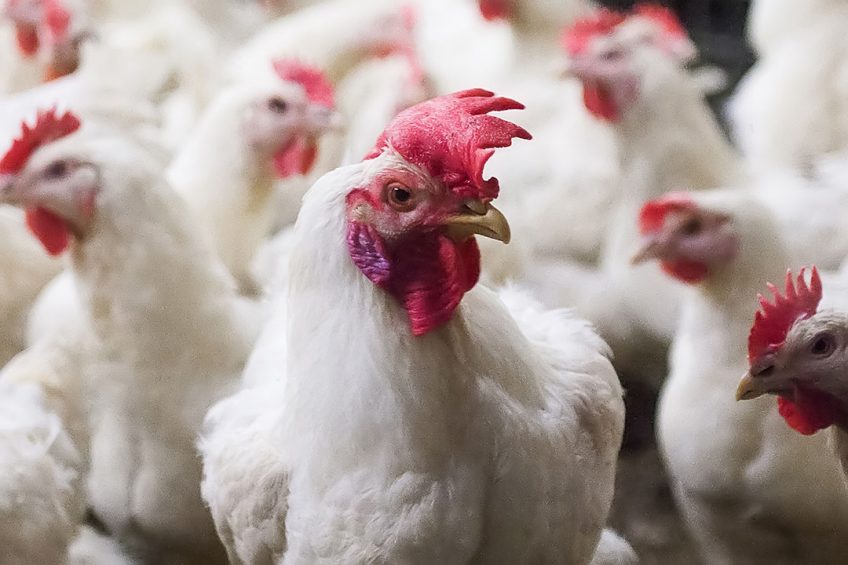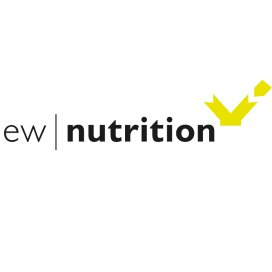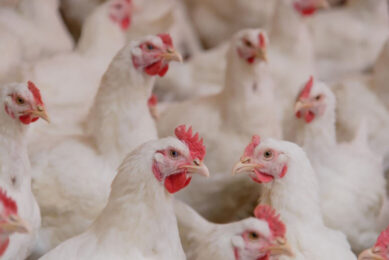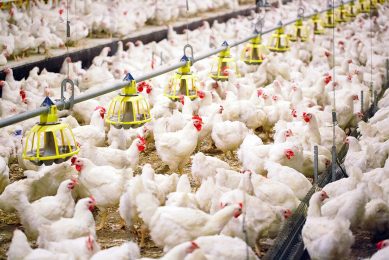Part 2: What poultry producers should know about endotoxins

In this second part of our two-part series on endotoxin management for poultry, we look at the stress factors that can lead to an increase of circulating LPS, the consequences for poultry animals’ welfare, health and productivity, and the animals’ internal strategies to deal with the issue. Additionally we will explore and suggest different interventions that can be used to manage this important risk.
The intestinal barrier – a defence against harmful agents
Within the intestinal epithelium, several types of highly specialised cells are involved in cell regeneration, digestion, nutrient absorption and immune surveillance (Figure 1).
The gastrointestinal tract is also home to a diverse community of bacteria, fungi, protozoa and viruses, which lines the walls of the distal part of the intestine. This microbiota prevents the growth of pathogenic bacteria through competitive exclusion and the secretion of natural antimicrobial compounds, volatile fatty acids and organic acids. It is composed mostly of gram-positive bacteria, however gram-negative are also present, and their abundance is higher in the distal part.
Figure 1 – The intestinal barrier elements that protect the animals from the action of pathogens, toxins, and other harmful agents.
Stress-unavoidable in animal production
Stress in animals can be defined as any factor causing disruption to their stable internal balance. Stress engenders a biological response to regain equilibrium. We can distinguish 4 major types of stress in the poultry industry:
- Technological or management-related
- Environmental
- Nutritional
- Internal – related to the animal’s health status and health challenges
Often the stress response is not successful in regaining homeostasis, then welfare, health and productivity are compromised. Moreover, all types of stress require changes in metabolism which deviate the use of resources, and also induce a disruption of intestinal integrity, reducing the efficacy of the barrier function and inducing luminal and systemic inflammation.
In practical poultry production, multiple stress factors occur simultaneously, and have additive or synergistic effects, leading to even higher losses.
Stress factors triggering luminal endotoxins
Feed
The feed supplied to production animals is designed to contribute to the animals’ ability to maximise their genetic potential. However, some feed components are also continuous inflammatory triggers. Dietary components, such as anti-nutritional factors, oxidized lipids and mycotoxins, induce a low-grade inflammatory response in the intestine of poultry animals throughout their lifecycles.
- Non-starch polysaccharides (NSP)
NSP are antinutritional factors present in cereals commonly used for animal feeds such as barley, wheat, rye, triticale and oats. Diets with high NSP increase digesta viscosity, hinder digestion and trigger inflammation. Changes in the microbiome and gut barrier are also observed, which increases LPS and pathogen translocation. - Oxidized fats
When the diet contains oxidized fats, the intestinal epithelium is the first contact with the peroxides contained in it. The main effects are oxidative stress, apoptosis of enterocytes, inflammation and the loss of the epithelial barrier. - Excess of nutrients
Diets with a high content of fat may increase the passage of LPS into the bloodstream. This occurs when dietary lipids are absorbed in the small intestine through their incorporation into triglyceride-rich lipoproteins – known as chylomicrons – which also able to bind and transport LPS. - Feed management
Feed management influences gut health: abrupt, sudden feed changes in nutrient sources, as well as fluctuations in raw material quality, can lead to changes in the microbiome, inflammation, impairment of the gut function, leading to dysbiosis, and allowing a higher passage of LPS into the bloodstream.
 Part 1: What poultry producers should know about endotoxins
Part 1: What poultry producers should know about endotoxins
This article, the first part of the two-part series on endotoxin management for poultry, covers the relationship between endotoxins, gut health, the immune system, and animal performance.
Mycotoxins
When mycotoxins are ingested and absorbed, they trigger stress and impair immunity in animals. However, their effects start in gastrointestinal tract and extend from damage to the intestinal barrier function to the induction of apoptosis in enterocytes, leading to tissue damage and secondary infections.
Mycotoxins therefore can increase the risk of endotoxins in different ways:
- By inducing changes in the intestinal microbiota that increase gram-negative bacteria.
- By disrupting the intestinal barrier function, allowing endotoxins (as well as other toxins and pathogens) to cross the gut barrier and pass into the bloodstream.
- By alterations in the immune response, low doses of mycotoxins, such as trichothecenes, induce the upregulation of pro-inflammatory cytokines. A possible synergy can be inferred as when they are together, the effects are prolonged and require a lower dosage to be triggered.
Heat stress
Acute and chronic heat stress increases gut permeability, not only by lowering feed intake, but also by increasing intestinal oxidative stress and disrupting the expression of tight junction proteins. Heat stress results in the damage and destruction of intestinal cells, inflammation, and imbalance of the microbiota. An increased release and passage of endotoxins has been demonstrated (Figure 2) as well as a higher expression of TLR-4 and inflammation. Additionally, the stress-induced increase in intestinal permeability favours the translocation of pathogenic bacteria (e.g. Salmonella and Campylobacter). As a consequence, a higher risk of bacterial translocation to meat and food products can be expected.
Figure 2 – Systemic LPS increase (in comparison with a non-stressed control) after different heat stress challenges in broilers:16°C increased for 2, 5 and 10 hours (Huang et al., 2018); 9°C increased for 24 and 72 hours (Nanto-Hara et al., 2020); 10°C continuously for 3 and 10 days, and 15°C 4 hours daily for 3 and 10 days (Alhenaky et al., 2017).

Disease
The impairment of intestinal functions caused by the different stress factors impacts the incidence of disease in poultry production. Stress induces changes in the microbiome, reducing diversity and allowing pathogens to thrive. Figure 3 shows the differences in the main gut characteristics between healthy and in-dysbiosis animals. An increase in Enterobacteriaceae leads to higher intestinal LPS.
Figure 3 – Differences in the main gut characteristic between healthy and in-dysbiosis animals (adapted from Kogut, 2013).

In clinical and subclinical necrotic enteritis (NE), the intestinal populations of gram-negative bacteria, including Salmonella and E.coli, also increase (Figure 4). The lesions associated with the pathogen compromise the epithelial permeability and the intestinal barrier function, resulting in translocation of bacteria and LPS (Figure 5) into the bloodstream and internal organs.
Figure 4 – Increase in specific bacteria population after a NE challenge (adapted from Liu et al., 2018).

Figure 5 – Increase in systemic LPS (vs a healthy control) after a NE challenge (adapted from Chen et al., 2015, Li et al., 2018 & Liu at al., 2018).

Antibiotic treatments
Antibiotic treatments have a rapid antibacterial effect. In case of disease, they can represent a suitable intervention. However, antibiotics should be prescribed by a veterinarian, taking into consideration the disease causative agent, mode of action, and the presence and potential of resistance genes.
Another limitation of the use of antibiotics is the potential LPS release, as in sick animals, the intestinal barrier might be compromised and LPS may pass into the bloodstream, inducing the inflammatory response.
Various oral antibiotics, even at continuous low-doses, promote the translocation of (commensal) bacteria and LPS across the intestinal epithelium. However, antibiotics differ in their potential to liberate endotoxins from bacterial cell walls. For example, some classes of β-lactam antibiotics lead to markedly increased levels of free LPS, while carbapenems and aminoglycosides produce relatively low amounts. In general, a slower bacterial killing by bacteriostatic antibiotics is related with less endotoxin release.
The animal’s response: detoxification and clearance of LPS
Neutralisation of LPS can be achieved by the animals using different internal mechanisms:
- The secretion of molecules that bind the LPS
Intestinal cells secrete antimicrobial peptides (AMP), some of which can bind the negatively charged LPS due to their cationic nature; once bound to AMPs, LPS is no longer able to trigger inflammation.
LPS binding protein (LBP), produced in the liver and in the epithelial cells of the lungs and intestine, forms a high-affinity complex with LPS and delivers this to the CD14 co-receptor, alerting the immune system of the presence of the endotoxin. At high concentrations of blood LPS, LBP behaves differently: it decreases LPS activity by dissociating it from CD14 and transferring the LPS to lipoprotein molecules that neutralize the LPS. These actions aid in preventing septic shock in high LPS challenges.
- Enzymes that decrease activity of Lipid A by promoting its degradation
Gram-negative bacterial infections are modulated by Acyloxyacyl-hydrolase (AOAH), a host-enzyme produced by immune cells. AOAH acts mainly in the liver and spleen by deacylating LPS (removing the acyl chains in second chain of fatty acid from Lipid A), producing a LPS structure unable to initiate any signalling.
In the intestine and in the liver, Alkaline-phosphatase (ALP) detoxifies LPS by dephosphorylation of the diphosphoryl moiety of lipid A. In this way, LPS is not recognised by one of its co-receptors and thus no longer activates the inflammatory response.
- The detoxification of LPS through the liver
When LPS crosses the gut barrier, it is directed to the liver, via the portal vein, where major detoxification processes occur though enzymes such as AOAH and ALP. Afterwards, a co-excretion with bile acids into the duodenum occurs.
Animals suffering from fatty liver disease are more susceptible to LPS, showing inflammation and even more severe liver damage.
- Adaptations in the host
The mucus layer of the intestine provides a physical barrier that protects the epithelial cells. LPS up regulates Muc2 expression, which is one of the proteins that composes mucin.
These mechanisms are costly for the animal as they require the mobilisation of resources.
The role of in-feed solutions
It is practically impossible to avoid stress in commercial poultry production, but its effects can be managed and mitigated. Products to promote intestinal health, barrier integrity and a proper enteric function represent a benefit for the animal. Enzymes, fibres, plant extracts, and pro- and pre-biotics are useful tools that provide good intestinal health to production animals.
The compounds known as mycotoxin binders can adsorb small molecules during their passage through the digestive tract, resulting in the excretion of a toxin-adsorbent complex in the faeces. Some compounds have been tested for their ability to mitigate the adverse effects of LPS, including specific products that have also been tested for their ability to bind mycotoxins. These results indicate the opportunity to use specific toxin-binding products as a practical and economic intervention to reduce the LPS challenges under conditions of stress and/or mycotoxin exposure in animals.
Using healthy intestinal cell line-models to study the mechanisms of existing harmful substances and their mitigation strategies is an advantageous approach, as the effects can be inferred in different species. A study done in the Research Centre for Food and Nutrition of CREA (Rome), using of the IPEC-J2 cell model, proved that a product from EW Nutrition – Mastersorb Gold (MS) – reduced inflammation when an LPS challenge was combined with the product. The assay measured immunofluorescence of NF-kB, a protein complex involved in the inflammation pathway (shown by the red areas in Figure 6) as well as a IL-8, a pro-inflammatory cytokine, which was reduced by 40% in the cells that received LPS+MS, in comparison with the LPS-challenged cells.
Figure 6 – Immunofluorescence of NF-kB (P-p65) in IPEC-J2 cells treated for 4 h either with or without an LPS challenge and with and without MS. Red: p-p65-TRITC (Tetramethylrhodamine). Green: occludin-FITC (Fluorescein-5-isothiocyanate). Blue: nuclei-DAPI (4′, 6-Diamidino-2- Phenylindole).

Stress-induced endotoxemia can be mitigated
As discussed above, under higher stress situations, LPS can cross the gut barrier and produce systemic inflammation, leading to even higher losses of performance and profitability in poultry operations.
However, in-feed solutions, such as those that bind endotoxins in the gastrointestinal tract, help to mitigate the negative impact of LPS and other toxins in animal production.
Authors: Guillermo Gaona, Regional Technical Manager for LATAM, and Marisabel Caballero, Global Technical Manager, Poultry – EW Nutrition





